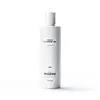What's inside
What's inside
 Key Ingredients
Key Ingredients

 Benefits
Benefits

 Concerns
Concerns

 Ingredients Side-by-side
Ingredients Side-by-side

Water
Skin ConditioningAmmonium Lauryl Sulfate
CleansingAmmonium Laureth Sulfate
CleansingPEG-120 Methyl Glucose Dioleate
EmulsifyingAmmonium Xylenesulfonate
Glycerin
HumectantButylene Glycol
HumectantHydrolyzed Wheat Protein
Skin ConditioningQuillaja Saponaria Bark Extract
CleansingSaponaria Officinalis Root Extract
Skin ConditioningYucca Schidigera Root Extract
Skin ConditioningCocamidopropyl Betaine
CleansingAscorbyl Palmitate
AntioxidantPolysorbate 20
EmulsifyingDimethyl Lauramine Oleate
Skin ConditioningPolyquaternium-10
Dimethyl Mea
BufferingCitric Acid
BufferingParfum
MaskingBenzyl Benzoate
AntimicrobialLimonene
PerfumingLauryl Alcohol
EmollientAmmonium Sulfate
Caprylyl Glycol
EmollientEthylhexylglycerin
Skin ConditioningHexylene Glycol
EmulsifyingOleic Acid
EmollientSodium Acetate
BufferingSodium Chloride
MaskingSodium Glycolate
BufferingDimethylaminopropylamine
Isopropyl Alcohol
SolventSodium Metabisulfite
AntioxidantSodium Sulfite
PreservativeDisodium EDTA
Tetrasodium EDTA
Potassium Sorbate
PreservativeSodium Benzoate
MaskingPhenoxyethanol
PreservativeBenzyl Alcohol
PerfumingWater, Ammonium Lauryl Sulfate, Ammonium Laureth Sulfate, PEG-120 Methyl Glucose Dioleate, Ammonium Xylenesulfonate, Glycerin, Butylene Glycol, Hydrolyzed Wheat Protein, Quillaja Saponaria Bark Extract, Saponaria Officinalis Root Extract, Yucca Schidigera Root Extract, Cocamidopropyl Betaine, Ascorbyl Palmitate, Polysorbate 20, Dimethyl Lauramine Oleate, Polyquaternium-10, Dimethyl Mea, Citric Acid, Parfum, Benzyl Benzoate, Limonene, Lauryl Alcohol, Ammonium Sulfate, Caprylyl Glycol, Ethylhexylglycerin, Hexylene Glycol, Oleic Acid, Sodium Acetate, Sodium Chloride, Sodium Glycolate, Dimethylaminopropylamine, Isopropyl Alcohol, Sodium Metabisulfite, Sodium Sulfite, Disodium EDTA, Tetrasodium EDTA, Potassium Sorbate, Sodium Benzoate, Phenoxyethanol, Benzyl Alcohol
 Reviews
Reviews

Ingredients Explained
These ingredients are found in both products.
Ingredients higher up in an ingredient list are typically present in a larger amount.
Benzyl Alcohol is most commonly used as a preservative. It also has a subtle, sweet smell. Small amounts of Benzyl Alcohol is not irritating and safe to use in skincare products. Most Benzyl Alcohol is derived from fruits such as apricots.
Benzyl Alcohol has both antibacterial and antioxidant properties. These properties help lengthen the shelf life of products. Benzyl Alcohol is a solvent and helps dissolve other ingredients. It can also improve the texture and spreadability.
Alcohol comes in many different forms. Different types of alcohol will have different effects on skin. This ingredient is an astringent alcohol.
Using high concentrations of these alcohols are drying on the skin. They may strip away your skin's natural oils and even damage your skin barrier. Astringent alcohols may also irritate skin.
Other types of astringent alcohols include:
According to the National Rosacea Society based in the US, you should be mindful of products with these alcohols in the top half of ingredients.
Any type of sanitizing product will have high amounts of alcohol to help kill bacteria and viruses.
Learn more about Benzyl AlcoholCitric Acid is an alpha hydroxy acid (AHA) naturally found in citrus fruits like oranges, lemons, and limes.
Like other AHAs, citric acid can exfoliate skin by breaking down the bonds that hold dead skin cells together. This helps reveal smoother and brighter skin underneath.
However, this exfoliating effect only happens at high concentrations (20%) which can be hard to find in cosmetic products.
Due to this, citric acid is usually included in small amounts as a pH adjuster. This helps keep products slightly more acidic and compatible with skin's natural pH.
In skincare formulas, citric acid can:
While it can provide some skin benefits, research shows lactic acid and glycolic acid are generally more effective and less irritating exfoliants.
Most citric acid used in skincare today is made by fermenting sugars (usually from molasses). This synthetic version is identical to the natural citrus form but easier to stabilize and use in formulations.
Read more about some other popular AHA's here:
Learn more about Citric AcidDisodium EDTA plays a role in making products more stable by aiding other preservatives.
It is a chelating agent, meaning it neutralizes metal ions that may be found in a product.
Disodium EDTA is a salt of edetic acid and is found to be safe in cosmetic ingredients.
Learn more about Disodium EDTAPhenoxyethanol is a preservative that has germicide, antimicrobial, and aromatic properties. Studies show that phenoxyethanol can prevent microbial growth. By itself, it has a scent that is similar to that of a rose.
It's often used in formulations along with Caprylyl Glycol to preserve the shelf life of products.
Polysorbate 20 is made by combining ethoxylation of sorbitan, ethylene oxide, and lauric acid. It is a mild cleansing agent, surfactant, and emulsifier.
As a surfactant, it helps collect dirt and oils for washing. Emulsifiers prevent oils and water from separating.
Polysorbate 20 also adds scent to a product. Since it is made using sorbitol, it has a sweet scent. Sorbitol can also be found in fruits such as apples and peaches.
The lauric acid used to create Polysorbate 20 is often derived from coconuts.
Polysorbate 20 may not be fungal acne safe.
Learn more about Polysorbate 20Water. It's the most common cosmetic ingredient of all. You'll usually see it at the top of ingredient lists, meaning that it makes up the largest part of the product.
So why is it so popular? Water most often acts as a solvent - this means that it helps dissolve other ingredients into the formulation.
You'll also recognize water as that liquid we all need to stay alive. If you see this, drink a glass of water. Stay hydrated!
Learn more about Water